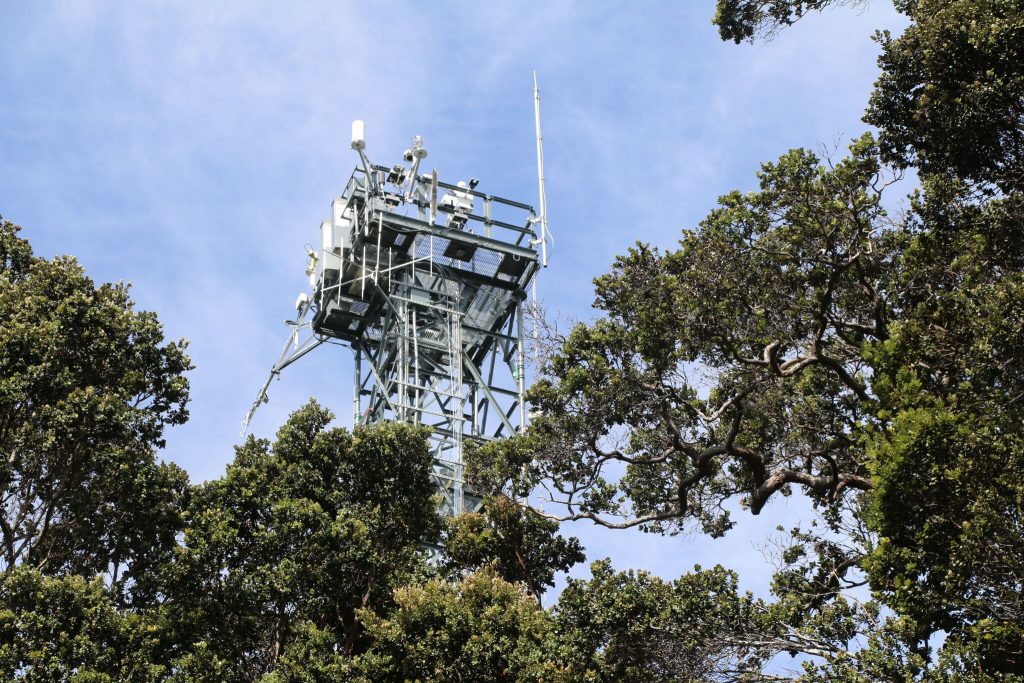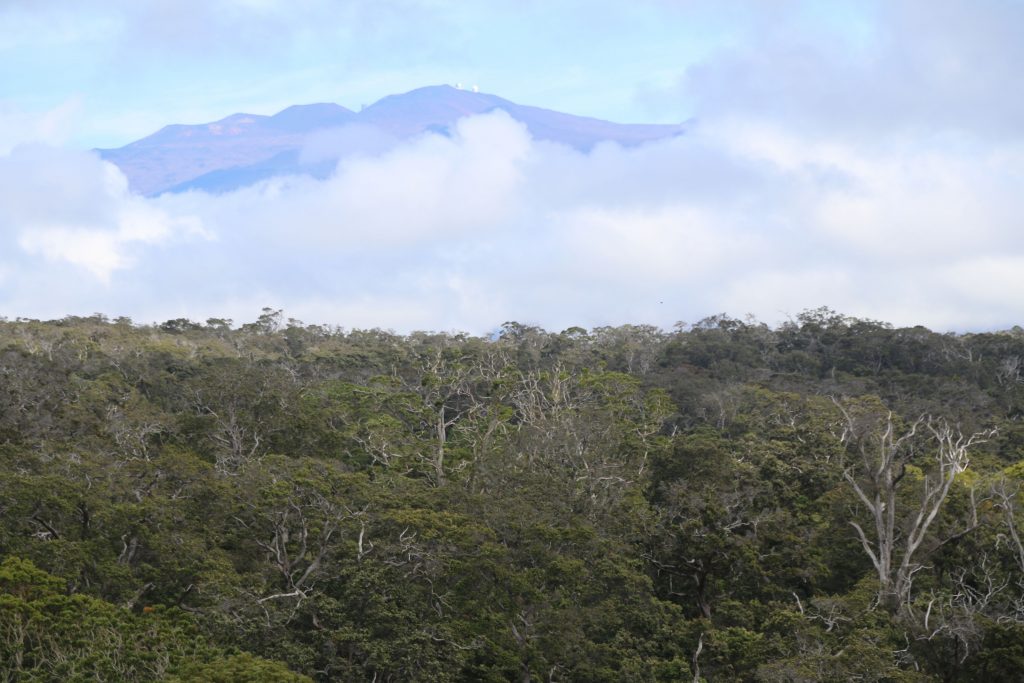Final Field Site in National System Goes Online in Natural Reserve Area
NEON in Hawaii Web Feature from Hawaii DLNR on Vimeo.
The Department of Land and Natural Resources reports that towering above the highest trees in this Hawai‘i Island Natural Area Reserve, a 105-foot-high meteorological tower, with millions of dollars of high-tech sensing equipment attached to it, is the final component of the National Ecological Observatory Network or NEON
Funded by the National Science Foundation and operated by Battelle Memorial Institute, NEON is a system of 81 field sites, spread across the entire country, with the final one in Hawai‘i just recently completed and online. Each site collects standardized data from automated sensors, airborne remote sensing surveys and on-the-ground observational sampling by field scientists. The terrestrial, aquatic and atmospheric data and samples collected at these sites are available to scientists and anyone else interested, through a single, openly accessible data portal. NEON is expected to generate data for ecological research over the next 30 years.
Michael Long is NEON’s Field Operations Manager in Hawai‘i and he explains, “The idea of NEON is to create a giant data clearinghouse, where anyone can go to the web and access data from Alaska, Hawai‘i, Puerto Rico and every state and see continental-scale changes for the next three decades. It’s available to researchers, students, to anybody and we hope it will get people excited about science as they see the types of measurements and the types of data that we can collect and how it connects to the environmental changes we see around us.”
Standing atop the tower recently, Robert Hamnett, the Senior Field Ecologist for NEON in Hawai‘i rattles off a list of the data collection instrumentation on the observatory. Net radiometer, photoactive radiation sensors, rain samplers, CO2 gas systems, carbon flux sensors, tipping buckets…and the list goes on. “A huge benefit of NEON,” Hamnett explains, “is there are guaranteed, standardized protocols to measure everything here in Hawai‘i, exactly the same way it’s being measured across the nation. There’s never been anything like it.”
The automated sensors on the tower in Pu‘u Maka‘ala Natural Area collect weather and climate data from above the tree canopy and down to the ground. Additional sensors in the ground collect soil health data. The NEON field scientists here also collect routine observations of birds, insects, soils, and plants to monitor changes in traits and populations dynamics.
Shea Uehana, a Senior Ecologist with the NEON project, lays on the ground and peers through binoculars at the trees surrounding the tower. He said, “Our field scientists conduct dozens of observational sampling protocols that make up the terrestrial observational system, meaning that the data from the ground can be used to validate and correlate with data you get from the tower. For instance, we look at plant phenology, which is the timing of flowering and leaf bud on native species like the ʻŌhiʻa.”
The rich data emanating from NEON will be a boon for land managers and researchers working in the Pu‘u Maka‘ala Natural Area Reserve. Steve Bergfeld, Hawai‘i Island Branch Manager for the DLNR Division of Forestry and Wildlife (DOFAW) commented, “Pu‘u Maka‘ala is one of the most intact native forests in the entire state. It supports a wide variety of rare and endangered plants and animals. It would be impossible for us to collect environmental data with the scope and sophistication that NEON provides, with the enormous added benefit of being able to detect ecological changes over many decades. The information collected by NEON will help us make better and more informed decisions on behalf of the forest life that we’re charged with protecting and preserving. Information is definitely power in this case.”
Currently, 13 different data sets are available for download from the NEON Hawai‘i field site,, but that number is expected to grow exponentially over time. Hawai‘i’s NEON site will be the only one here. Other states, like California, have multiple field sites, some of which are relocatable.
National Ecological Observatory Network, Media Clips from Hawai‘i DLNR on Vimeo.



















